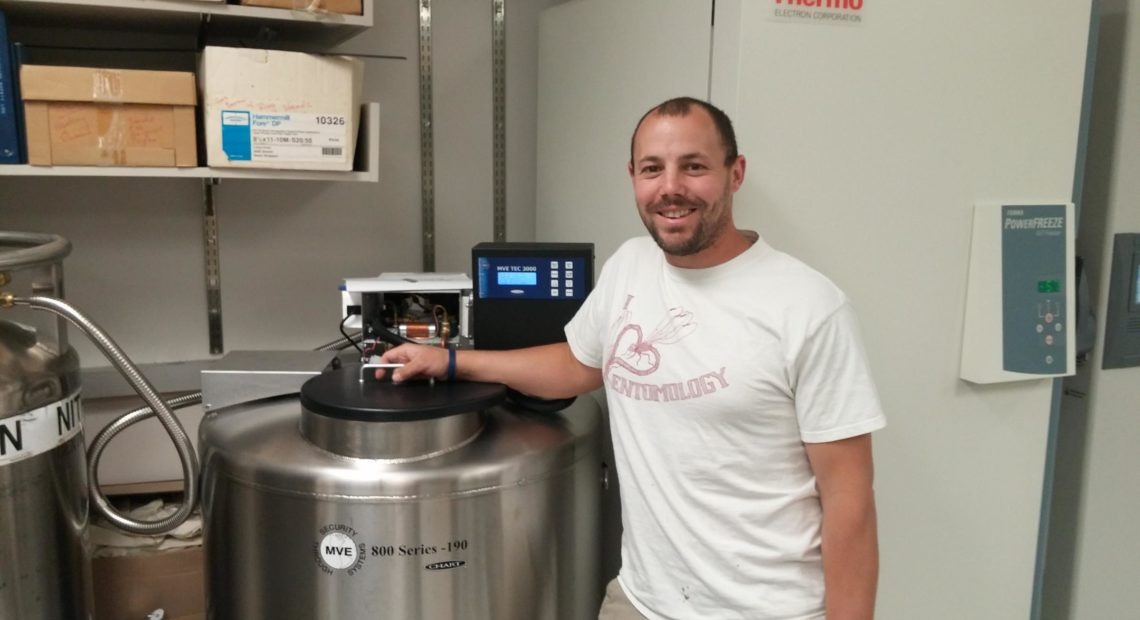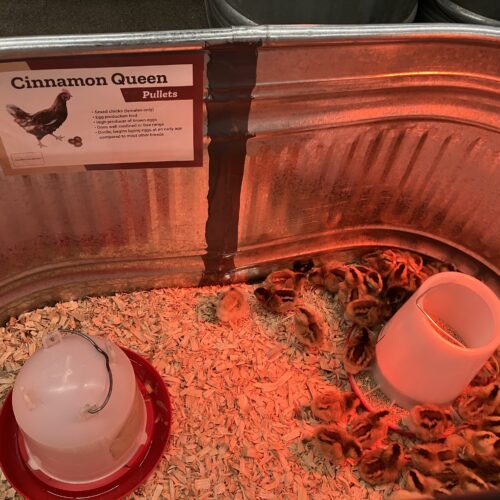
Beekeepers Can’t Change The Winter, But They Can Change The Bees
American honey bees don’t do well in winter. It’s a serious problem for beekeepers. They experience their biggest losses during winter – and beekeepers lose about a third of their bees every year. We recently looked at efforts to help bees thrive by changing land management practices. Now, researchers at Washington State University and beekeepers in the state are working to help bees withstand the cold and survive the winter.
To understand how this research could change the bee industry, you first need to understand America’s bee species.
America has no native honey bees. It has a number of wild bee species, such as bumblebees, but these aren’t used for commercial bee production and pollination. Almost all of America’s honey bees are a single subspecies, the Italian Apis mellifera ligustica. These are useful bees. They aren’t aggressive, they produce a lot of honey, and they’re easy to raise.
But even with all their advantages, handling cold weather isn’t one of them.
Breeding A Bee That Can Withstand The Cold
Brandon Hopkins, a honey bee researcher at Washington State University, is working to fix part of the problem. Partly funded by Project Apis m., he’s trying to introduce more diverse stock into American bees. He’s focusing on Caucasian bees – Apis mellifera caucasia. From the Caucasus Mountains of eastern Europe, they’re used to the cold can forage more effectively in cold weather.
The challenge? Importation of bees has been illegal since 1922, in order to prevent the spread of disease.
They can, however, import honey bee semen. That doesn’t make introducing new genetic material to honey bees easy. Bee genetics are incredibly complicated. What’s most important is this:
“The males are haploid organisms. They’re really only related to the queen. Drones really have no father,” Hopkins says. “So when we inseminate a queen, the first round of daughters are just 50 percent of whatever we brought in. So we have to do these continual backcrosses.”
In other words, with each generation, that new genetic material becomes diluted. If Caucasian honey bee semen is introduced to Italian honey bees, the first generation would have half the Caucasian genetics, then a quarter, and so on. Without being able to bring in real bees, doing backcrosses (mating bees with previous generations to preserve these genes) was difficult. Fresh bee semen just didn’t last.
Hopkins developed a method to preserve that honey bee semen using liquid nitrogen. This means researchers can introduce that new genetic material across several generations.
Bees with the Caucasian genes are now in apiaries. That genetic material is expected to spread quickly – honey bees often interbreed with other colonies, or will simply swarm off and travel away from their original hives. Hopkins and other WSU researchers are already seeing more diverse bees in the colonies where they’ve introduced the new breed.
And more biodiversity means potentially stronger, healthier bees.
That’s not the only research Hopkins is involved in to help bees withstand the cold.
Helping Bees Survive The Winter
A more efficient bee may help address some of the almond industry’s February bee problems, but winter is still a hard time for bees. That’s when most apiaries experience their biggest losses. Often, bees spend the winter in holding areas in California. Those holding areas are warmer, but also overcrowded and stressful – and that can mean dead bees.
That’s why Matthew Shakespear, vice president of Olson Honey in Yakima, says the company started looking for a better way to keep bees in Washington for the winter.
They found a fruit storage facility in Yakima that was willing to rent rooms out to keep bees. They’re dark and temperatures can be easily controlled. This means the bees are less stressed.
When bees are kept in warmer weather for the winter, they’re more active. They lay eggs, they forage, and they fly – a lot. That all takes a lot of energy, which means the bees aren’t building up body fat. Without that fat, bees have a harder time withstanding the cold of winter. If it gets cold suddenly, bees near the edges of a frame can die, unable to cluster quickly enough to keep each other warm.
So Matthew Shakespear and Brandon Hopkins are researching less stressful, more efficient ways for bees to make it through the winter. They need to keep temperatures constant, but they also need to keep the bees inactive. That way they’ll build up fat stores over the season.
The key is carbon dioxide.
In the wild, bees will sometimes allow CO2 to build up in the hive. The bees become sluggish, but they’re not hurt. Researchers hypothesize that they’re using the lack of oxygen to slow their metabolism.
“While our bees are in storage, what we do is close the doors to our rooms and allow those CO2 levels to build up,” Shakespear says. “At nighttime, when it’s dark, open up doors to allow the air exchange to happen.”
The bees are kept in the hive, not flying or mating. Their metabolism is slowed, and that means they’re consuming less energy. It’s a little like a bear’s hibernation, but not quite.
“It’s not hibernation in the sense that they sleep,” Shakespear says. “They’re in the hive, they’re awake, but they’re not allowed to fly. They don’t get out of the hive. They’re forced to rest, forced to stay in.”
That inactivity doesn’t seem to stress the bees. Losses are lower, and the bees are healthier when winter ends. But figuring out the right carbon dioxide ratio takes a lot of careful research.
“During the daytime, when the doors are closed, CO2 will typically climb up to five percent,” Shakespear says. “Is that ideal? Is that the perfect level, is that the right duration? We don’t know yet.”
But figuring it out – especially in conjunction with a cold-resistant breed of bee – could mean easier winters, and lower bee losses.
Copyright 2016 Northwest Public Broadcasting
Related Stories:

Blueberry bust: Hundreds-of-millions-of-dollars blueberry biz in the Northwest and Canada act as one, tariffs could complicate the relationship
Snow melts in drops off bare blueberry bush twigs at a sprawling farm in Franklin County in Washington state. (Credit: Anna King / NWPB) Listen (Runtime 2:47) Read At one

What’s fuzzy, cute and sold out? Chicks
As egg prices surge, baby chicks have been selling out across the region — and the country. (Credit: Susan Shain / NWPB) Listen (Runtime 3:59) Read The first person showed

Searching for sage grouse: Looking for a chicken-sized needle in south-central WA
Seth Hulett, Audubon Washington’s senior program manager of the Columbia Plateau, searches through his spotting scope for sage grouse. (Credit: Courtney Flatt / NWPB) Listen (Runtime 4:12) Read In south-central
















